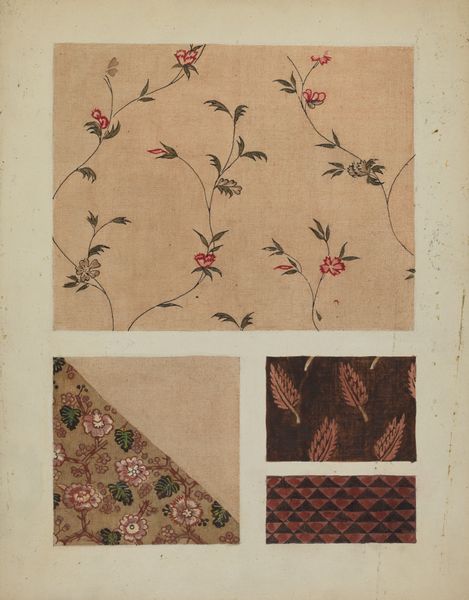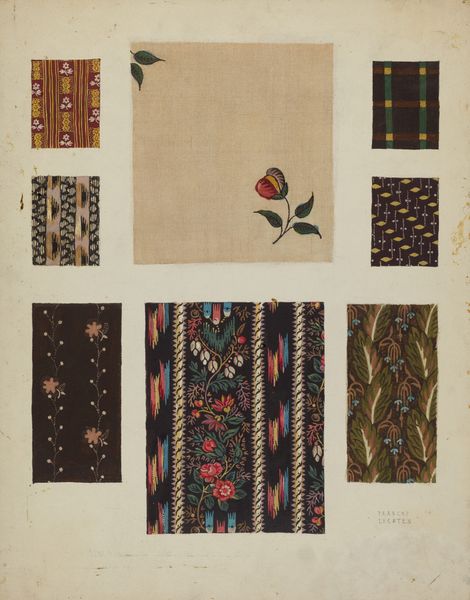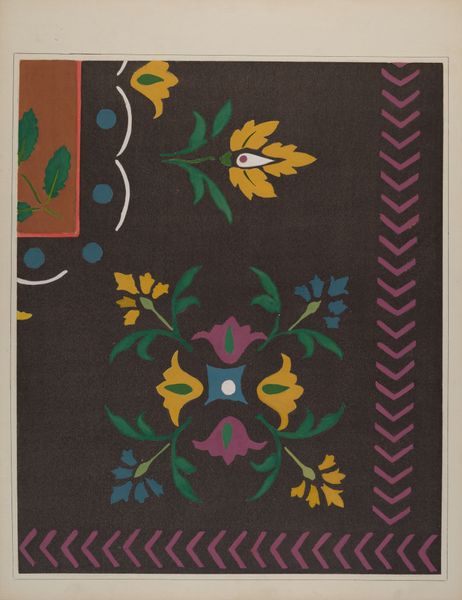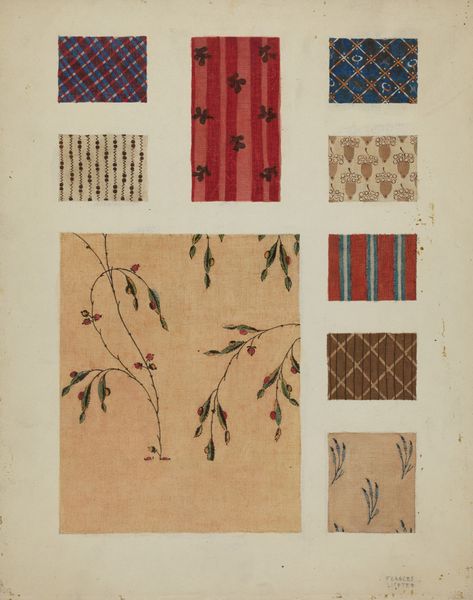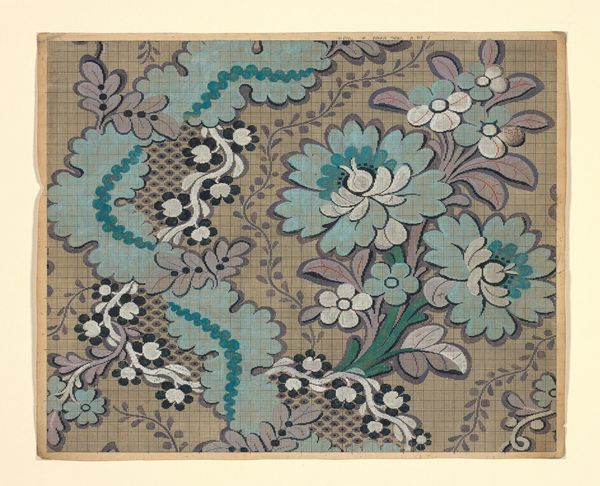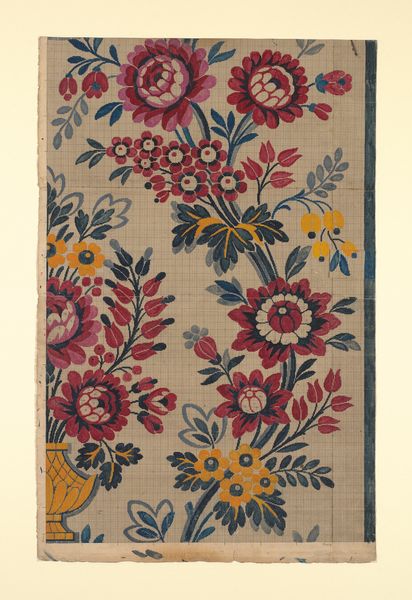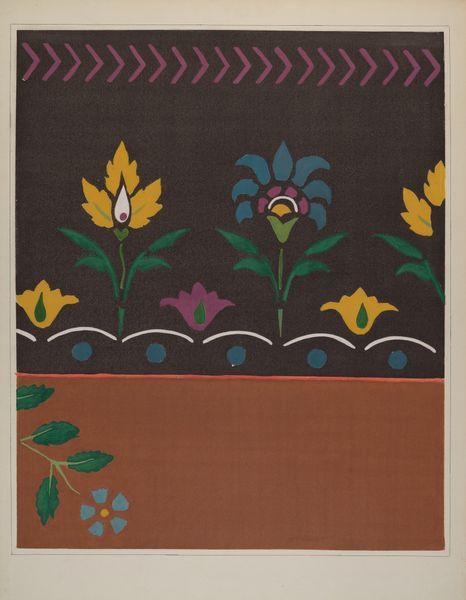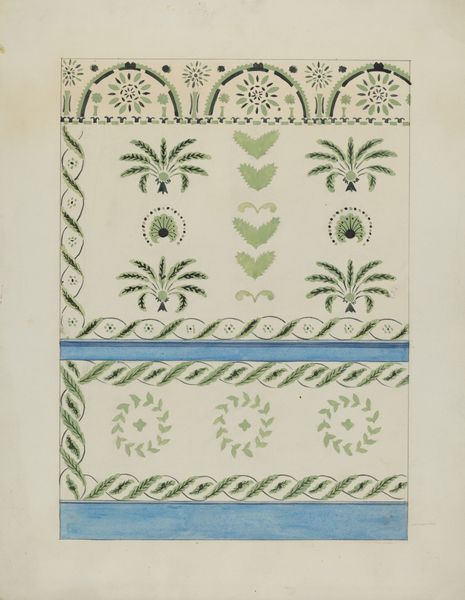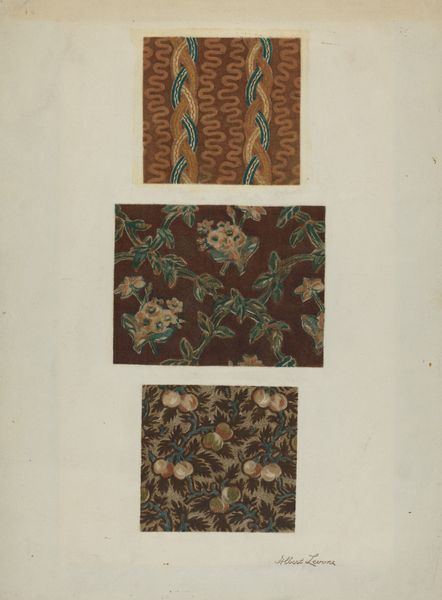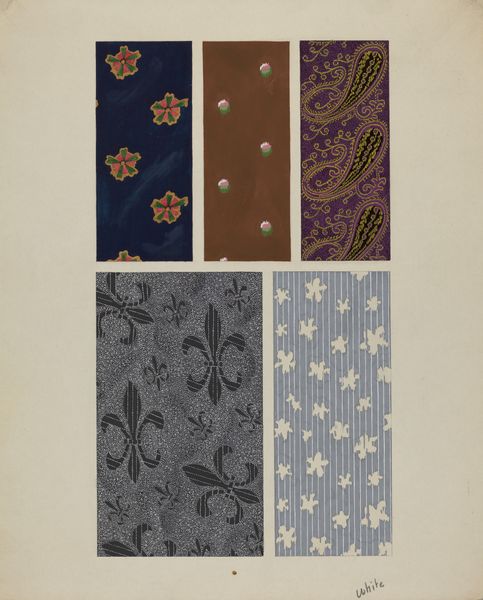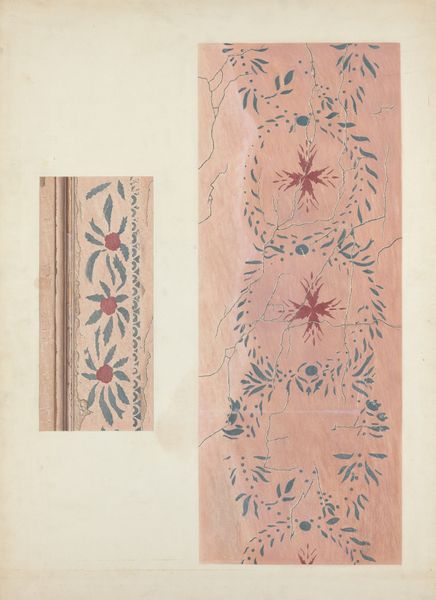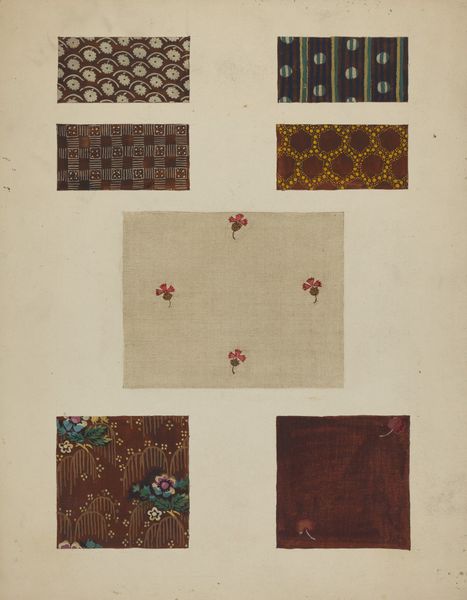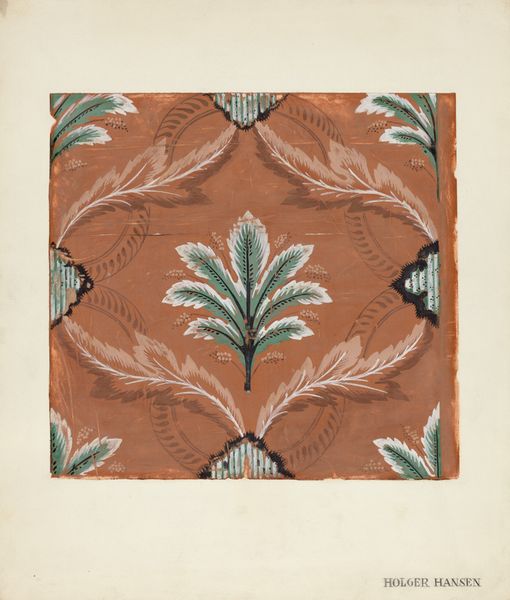
drawing, paper
#
drawing
#
paper
#
geometric
#
textile design
#
decorative-art
Dimensions: overall: 30.5 x 22.8 cm (12 x 9 in.) Original IAD Object: 15" high; 15" wide
Copyright: National Gallery of Art: CC0 1.0
Editor: Here we have "Materials from Quilt," made around 1936, by Edward White. It seems to be a drawing or study of different textile patterns on paper. There's such a lovely range of motifs here – floral, geometric, natural forms like leaves. I'm curious, how do you interpret this work? Curator: This piece resonates with the Pattern and Decoration movement, though predating its formal emergence. I see it as an exploration of identity and labor, especially within the context of domestic craft. These designs, likely intended for quilts, speak to the often-unacknowledged artistic contributions of women and marginalized communities. Do you notice how the individual patterns, when considered together, challenge traditional hierarchies of fine art versus craft? Editor: That's fascinating, I hadn't considered the gendered aspect of it. The designs feel so accessible and almost… welcoming, but placing them within the context of unrecognized labor gives them a new weight. Is there any connection to the social context of the time? Curator: Absolutely. The 1930s were a period of economic hardship, which also coincided with the Harlem Renaissance and surging debates on artistic ownership and influence. Quilting, in many African American communities, was both a necessity and an expressive art form. Examining White’s design, we can ask whose traditions and aesthetics he might be drawing upon and what power dynamics might be at play in the exchange. What visual cues point to these dialogues to you? Editor: Now that you mention it, the color palette and the density of some patterns give me a clearer sense of cultural influence... It also makes me rethink my first impression. I can now better understand its complexity. Curator: Indeed, viewing art through this lens allows us to examine questions of agency, representation, and cultural value, offering a far richer and more meaningful interpretation of artworks. Editor: I appreciate you highlighting those power dynamics and opening my eyes to the cultural narratives embedded within this quilt study. Curator: My pleasure, it is through dialogue that we start recognizing the stories artworks like "Materials from Quilt" seek to tell.
Comments
No comments
Be the first to comment and join the conversation on the ultimate creative platform.
